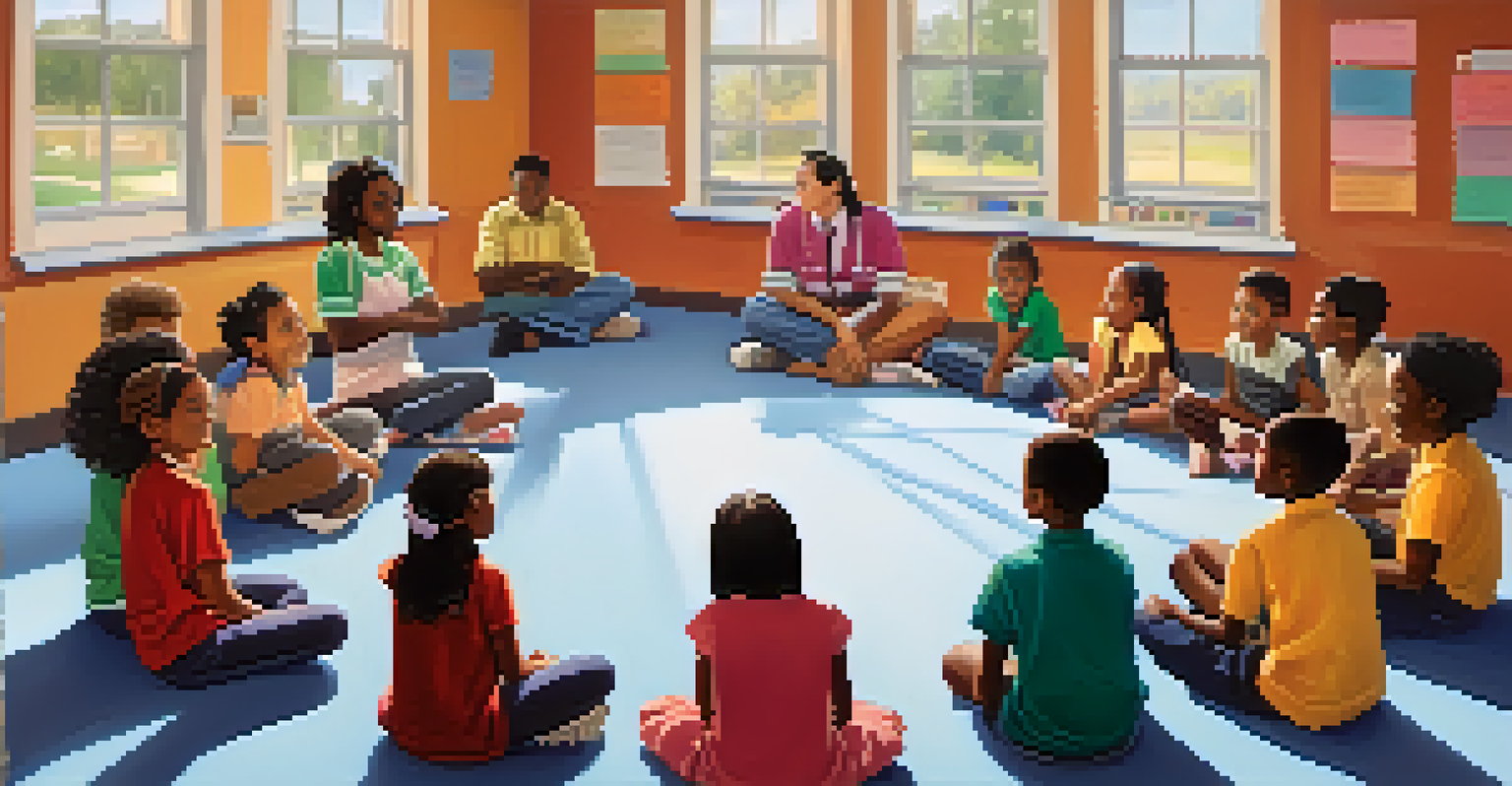The Importance of Storytelling in Microlearning Content

Understanding Microlearning and Its Benefits
Microlearning is a bite-sized approach to education that focuses on delivering content in short, digestible formats. This method caters to our increasingly busy lifestyles, allowing learners to grasp information quickly and efficiently. By condensing knowledge into smaller pieces, microlearning enhances retention and engagement, making it an effective tool for modern education.
Storytelling is the most powerful way to put ideas into the world today.
One of the key benefits of microlearning is its flexibility; learners can access content on-the-go, fitting education into their schedules. This approach breaks down traditional barriers to learning, such as time constraints and attention spans. As a result, organizations see increased participation rates and improved skill acquisition among employees.
However, for microlearning to be truly effective, it needs to be engaging. This is where storytelling comes into play, providing a narrative that captures attention and makes the material relatable. Incorporating stories into microlearning content can transform dry facts into memorable lessons.
The Role of Storytelling in Learning
Storytelling has been a fundamental part of human communication for centuries. It taps into our innate curiosity and emotional responses, making information more relatable and memorable. When learners can connect emotionally with a story, they are more likely to retain the information presented.

In educational contexts, stories can simplify complex ideas by framing them in a context that learners understand. For instance, a case study or a personal anecdote can illustrate a concept in a way that pure data cannot. This narrative structure not only makes the content more engaging but also encourages learners to reflect on their experiences.
Microlearning Enhances Retention
Microlearning's bite-sized approach improves information retention by delivering content in concise, engaging formats.
Furthermore, storytelling fosters a sense of community among learners. When people share their stories, they create connections and build relationships, which can enhance collaborative learning environments. This connection can lead to increased motivation and a shared desire to learn.
Crafting Compelling Stories for Microlearning
Creating compelling stories for microlearning involves understanding your audience and their needs. Start by identifying the key message or lesson you want to convey. Once you have that, think about how a relatable character or scenario can illustrate that message effectively.
The shortest distance between two people is a story.
Consider using a simple structure for your story: a beginning that sets the scene, a middle that presents a challenge, and an end that offers a resolution. This classic narrative arc helps maintain interest and provides a satisfying conclusion. You can also infuse elements of humor or surprise to keep the content lively.
Additionally, don't forget the visual elements. Incorporating images or videos alongside your story can enhance understanding and retention. In microlearning, where attention spans are short, visuals can help convey the message quickly and effectively, complementing the storytelling.
Enhancing Engagement through Relatable Characters
Relatable characters can significantly enhance the effectiveness of storytelling in microlearning. When learners see themselves in a character's shoes, they are more likely to engage with the material. These characters can embody the challenges or triumphs that learners may face in their own lives, creating a personal connection.
For example, imagine a character who struggles with time management in a workplace setting. By following their journey to overcome this obstacle, learners can gain insights and strategies they can apply to their own situations. This relatability not only makes the content more engaging but also reinforces the practical application of the lessons learned.
Storytelling Boosts Engagement
Incorporating storytelling into microlearning makes lessons more relatable and memorable, fostering emotional connections.
Moreover, creating diverse characters can help ensure that various learners see themselves represented in the stories. This inclusivity can foster a deeper connection and encourage a wider audience to engage with the microlearning content.
Utilizing Conflict and Resolution in Microlearning Stories
Conflict is a crucial component of storytelling that drives engagement. It introduces challenges that characters must face, creating tension and interest. In microlearning, presenting a conflict relevant to the learning objective can help learners understand the importance of the lesson being taught.
For instance, a story about a team facing a critical project deadline can highlight the need for effective communication and time management skills. By illustrating the consequences of failing to address the conflict, learners can grasp the significance of the lessons in a more profound way.
Resolution is just as important, as it provides closure and reinforces the learning outcome. After navigating the conflict, the character's success or failure can serve as a powerful reminder of the skills or knowledge being imparted. This helps reinforce the key takeaways and encourages learners to apply what they've learned in real-life situations.
The Science Behind Storytelling and Memory Retention
Research has shown that storytelling can significantly enhance memory retention. When information is presented in a narrative format, it activates different parts of the brain, making it easier to process and recall. This is why stories often stick with us long after the facts have faded.
One study found that people are 22 times more likely to remember a fact when it is part of a story. This is because stories create emotional connections and provide context, allowing learners to associate information with experiences. This connection makes the information more meaningful and easier to retrieve later.
Evaluate Impact for Improvement
Regularly assessing the effectiveness of storytelling in microlearning helps refine content and enhance learner engagement.
In the context of microlearning, this means that incorporating storytelling not only makes the content more engaging but also enhances its effectiveness. By weaving stories into the learning experience, educators can create lasting impressions that translate into improved knowledge retention.
Evaluating the Impact of Storytelling in Microlearning
To understand the effectiveness of storytelling in microlearning, it's essential to evaluate its impact on learner engagement and retention. Gathering feedback through surveys or assessments can provide valuable insights into how well learners connected with the material. This information can guide future content creation, ensuring it meets the needs of the audience.
Another effective method of evaluation is to analyze performance metrics. By comparing learners' performance before and after implementing storytelling techniques, organizations can measure improvements in knowledge and skills. This data can help demonstrate the value of storytelling in enhancing the overall learning experience.

Ultimately, the goal is to create microlearning content that resonates with learners. By continuously evaluating and refining storytelling approaches, educators can ensure that their content remains relevant and impactful, fostering a culture of continuous learning.